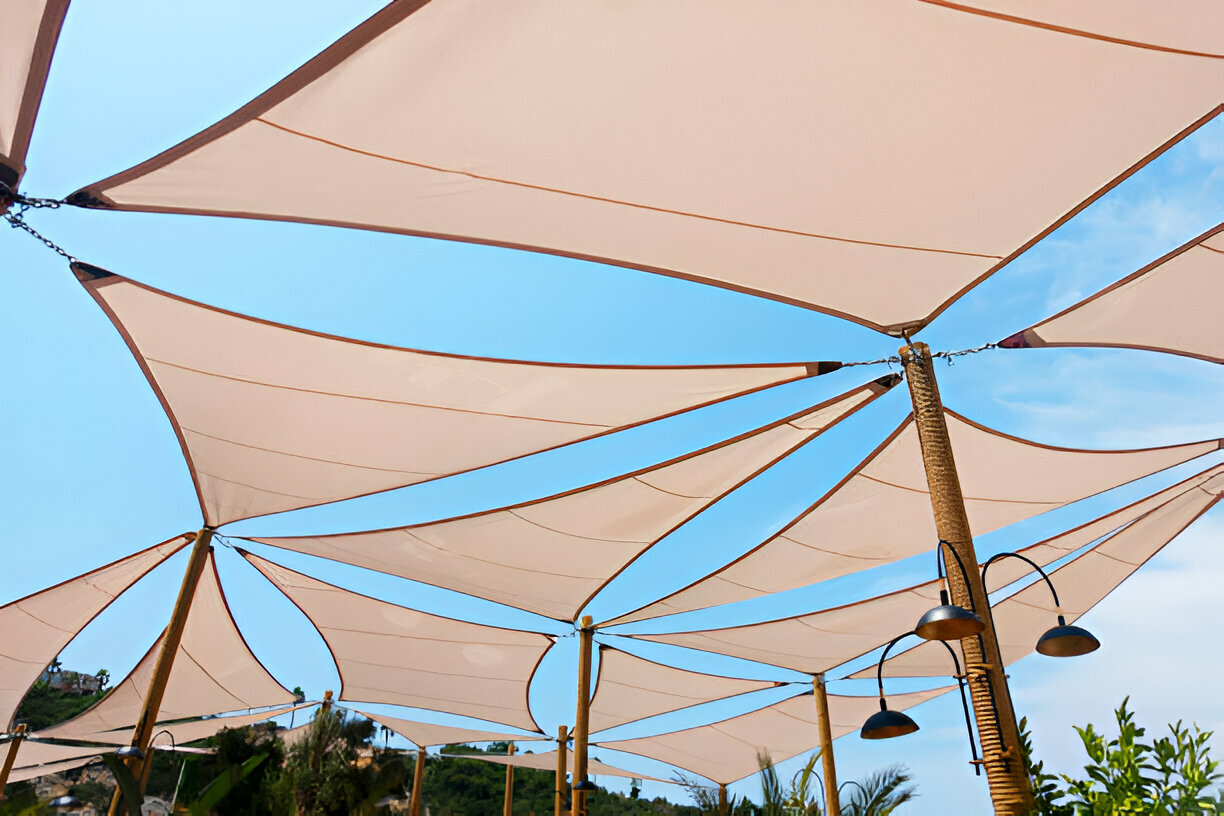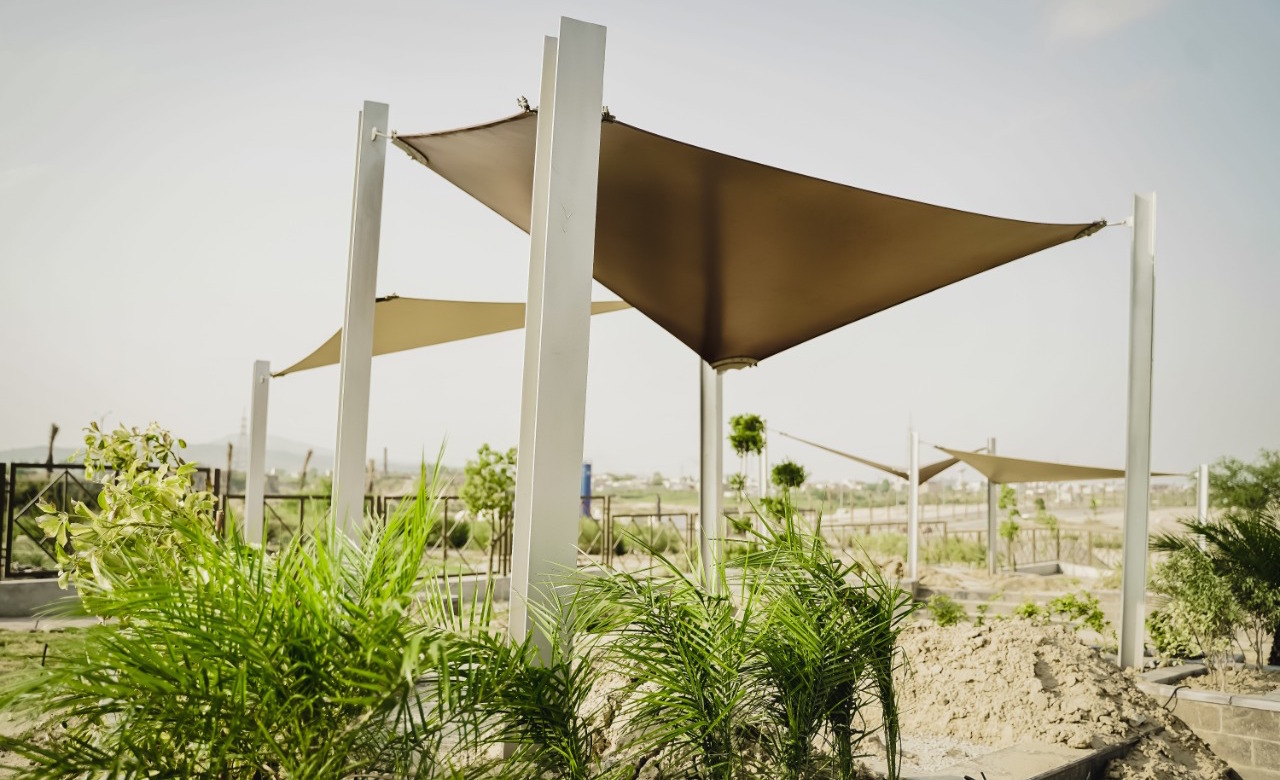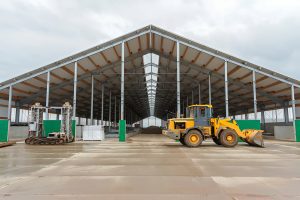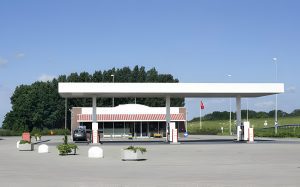
Tensile shade structures are cool buildings with special fabrics stretched over metal frames. They’re like big tents, but much stronger and fancier! These structures can be used for all sorts of things, from covering playgrounds to making beautiful buildings. Let’s learn all about them!
What Are Tensile Shade Structures?
Tensile shade structures are special buildings made of two main parts:
- A metal frame (usually steel or aluminum)
- A fabric cover that’s pulled tight over the frame
These structures are different from regular buildings made of bricks and wood. They use special fabrics and metals to create solid, lightweight buildings covering big spaces.
Materials Used in Tensile Shade Structures
The materials used in tensile shade structures are super important. They need to be strong, light, and able to handle different types of weather. Let’s look at the main materials used:
Metal Frame Materials
The frame of a tensile structure is usually made of either steel or aluminum:
- Steel: This is used for bigger, permanent structures. It’s very strong and can support heavy loads.
- Aluminum: This is lighter than steel and is often used for smaller or temporary structures.
Fabric Materials
The fabric used in tensile structures is not like regular cloth. It’s a special, strong fabric that can handle being stretched and exposed to the weather. Here are some of the main types:
PVC-Coated Fabric
This is one of the most common fabrics used. It’s made of polyester coated with a special plastic called PVC. Here’s why it’s great:

- It’s strong and lasts a long time
- It comes in lots of colors
- It’s not too expensive
- It can last about 15-20 years
PTFE-Coated Fiberglass
This fabric is even stronger and lasts longer than PVC-coated fabric. It’s made of fiberglass coated with a material called PTFE (also known as Teflon). Here’s what’s special about it:
- It can last 25-30 years or more
- It’s very strong and durable
- It stays clean easily (dirt doesn’t stick to it well)
- It lets some light through, which looks nice
Silicone-Coated Fiberglass
This is another type of coated fiberglass. It has some unique features:
- It can handle very high temperatures
- It’s very flexible
- It lets a lot of light through
ETFE Foil
This is a special type of plastic film. It’s not used as often as the other materials, but it has some cool properties:
- It’s very light
- It lets a lot of light through
- It can be made into interesting shapes
Other Important Parts
Besides the main frame and fabric, tensile structures use other important parts:
- Cables and Wires: These help keep the fabric in place and tight.
- Connectors: These join different parts of the frame together.
- Anchors attach the structure to the ground or a building to keep it stable.
How Tensile Shade Structures Are Designed
Designing a tensile shade structure is like solving a big puzzle. Designers have to think about many things to ensure the structure looks good, works well, and stays safe. Here’s how they do it:
Choosing the Shape
The shape of a tensile structure is super important. It affects how the structure looks, how it handles wind and rain, and how much shade it provides. There are two main shapes that designers often use:
- Saddle Shape: This looks like a horse saddle. It curves up in some places and down in others.
- Cone Shape: This looks like an upside-down ice cream cone.
Designers can also mix these shapes or create new ones to make unique structures.
Using Computer Programs
Designing tensile structures is tricky because the fabric moves and stretches. Designers use special computer programs to figure out:
- How the fabric will stretch
- Where the structure needs to be strongest
- How wind and rain will affect the structure
These programs help make sure the structure will be safe and work well.
Planning the Frame
The metal frame is like the skeleton of the structure. Designers have to plan:
- How big the frame pieces should be
- Where to put supports
- How to connect all the parts
Choosing Colors and Patterns
Designers also think about how the structure will look. They choose:
- What color the fabric should be
- If the fabric should have patterns
- How much light should come through the fabric
Thinking About the Environment
Good designers also think about where the structure will be built. They consider:
- How much sun and rain the area gets
- How strong the winds are
- If there’s snow in winter
All these things help them make a structure that will last a long time and work well in its location.
How Tensile Shade Structures Are Built
Building a tensile shade structure is different from building a regular building. Here’s how it’s usually done:
- Make the Parts: Most parts are made in a factory, not at the building site. This includes cutting the fabric and making the frame pieces.
- Prepare the Site: The ground where the structure will be built is ready. This might include digging holes for supports or pouring concrete.
- Build the Frame: The metal frame is put together on site. It’s like building a big puzzle.
- Attach the Fabric: The fabric is carefully attached to the frame. It needs to be pulled tight in just the right way.
- Tension the Structure: The fabric is stretched, and the structure is adjusted until everything is just right.
This process can be much faster than building a regular building. Some tensile structures can be built in just a few days!
Why Tensile Structure is important
Tensile shade structures are important for several key reasons:
- Sun protection: They provide effective UV protection, reducing skin cancer risks in sunny climates like Australia.
- Comfort: These structures create cooler, more comfortable outdoor spaces by blocking direct sunlight and heat.
- Versatility: Their lightweight design allows coverage of large areas with minimal support, suitable for various applications.
- Aesthetics: Tensile structures offer unique, visually appealing designs that enhance architectural aesthetics.
- Durability: Made from high-tech fabrics, they withstand harsh weather conditions and have long lifespans.
- Energy efficiency: Their translucent nature allows natural light while reducing heat gain, lowering energy costs.
- Cost-effectiveness: Compared to traditional structures, they’re often more affordable for large-span coverage.
- Quick installation: Tensile structures can be installed faster than conventional building methods.
Uses of Tensile Shade Structures
Tensile shade structures are used in many different ways. Here are some common uses:
Outdoor Spaces
- Covering playgrounds to protect kids from the sun
- Shading outdoor seating areas at restaurants
- Creating covered walkways in parks or shopping areas
Sports and Recreation
- Covering stadium seating
- Roofing for sports facilities like tennis courts or swimming pools
- Shading areas in theme parks
Transportation
- Covering bus stops or train platforms
- Shading parking lots
- Creating dramatic entrances for airports
Commercial and Industrial
- Covering outdoor shopping areas
- Roofing for warehouses or storage areas
- Creating unique facades for buildings
Events
- Temporary structures for festivals or fairs
- Covering stages for outdoor concerts
- Creating eye-catching entrance canopies for events
Educational
- Covering outdoor learning spaces at schools
- Shading courtyards in universities
- Creating unique structures for science centers or museums
Wrapping Up
Tensile shade structures are amazing buildings that combine science, math, and art. They use special materials and clever designs to create beautiful and useful spaces. From providing shade in a park to creating a stunning stadium roof, these structures are changing the way we think about buildings.
As we’ve learned, tensile structures have many benefits. They’re strong, light, and can be built quickly. They save energy, look great, and can be used in all sorts of ways. With new materials and designs always being developed, the future of tensile shade structures is very exciting!
Next time you see a cool-looking tent-like structure, you’ll know it’s probably a tensile shade structure. And now you know all about how it was designed, what it’s made of, and why it’s so awesome!


